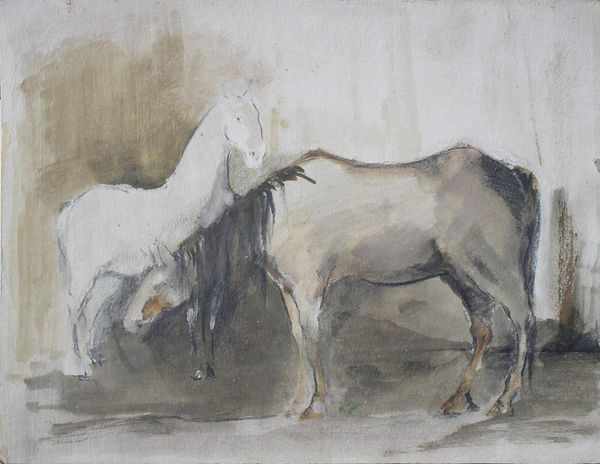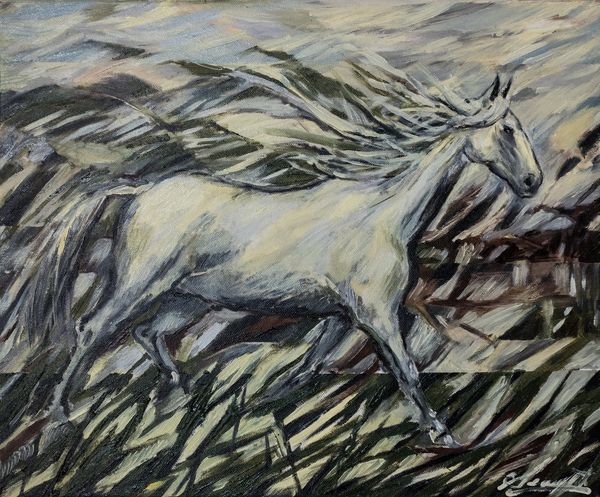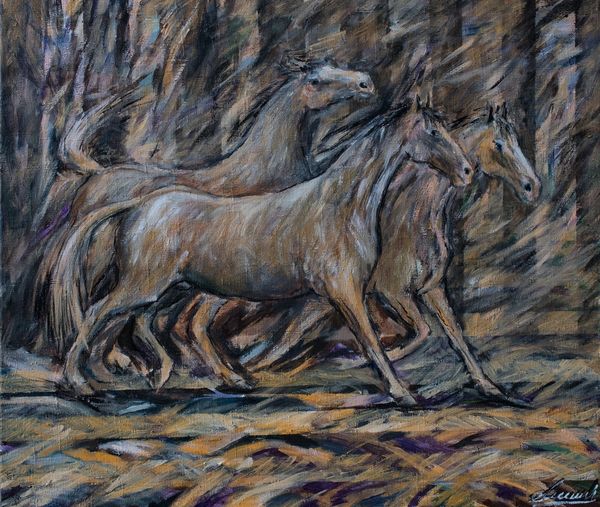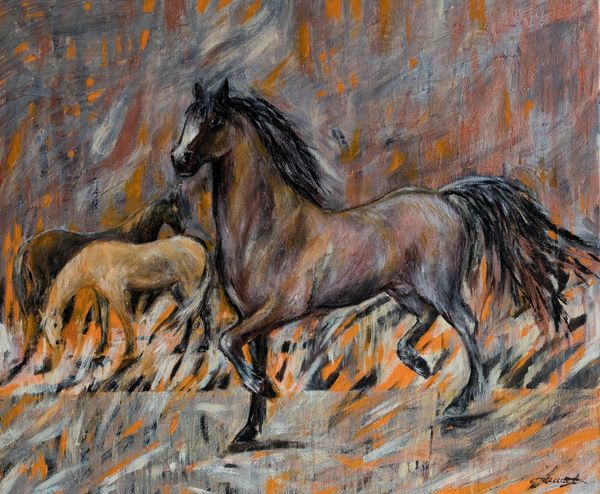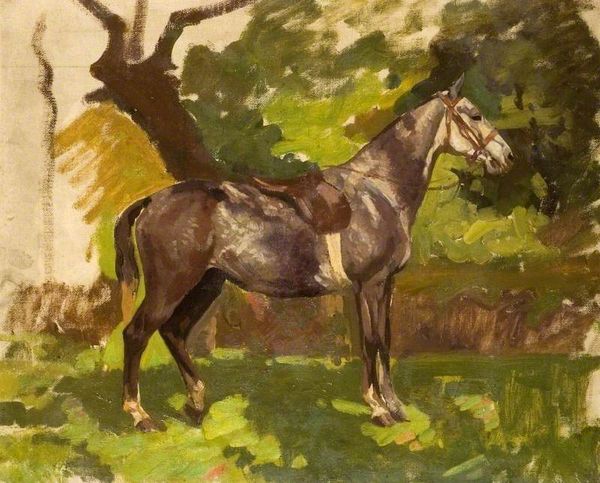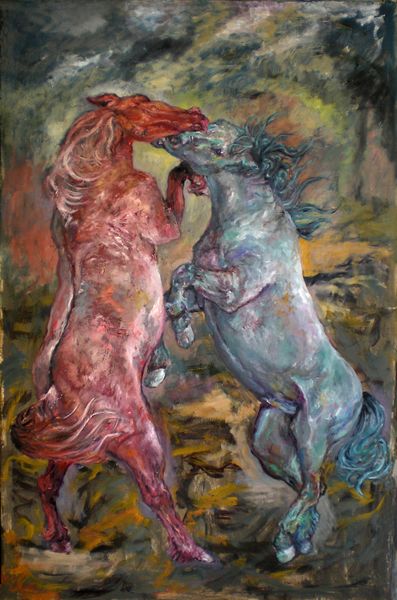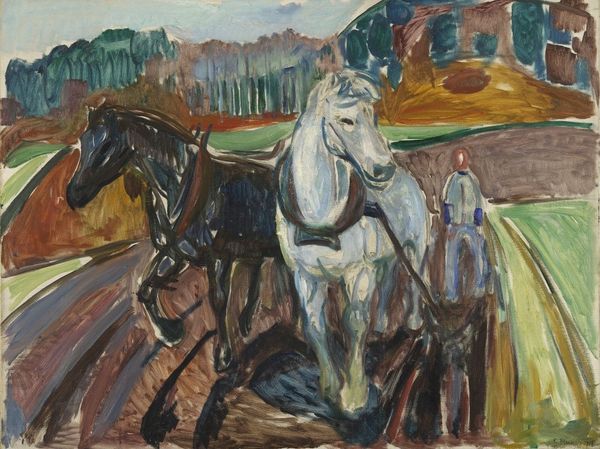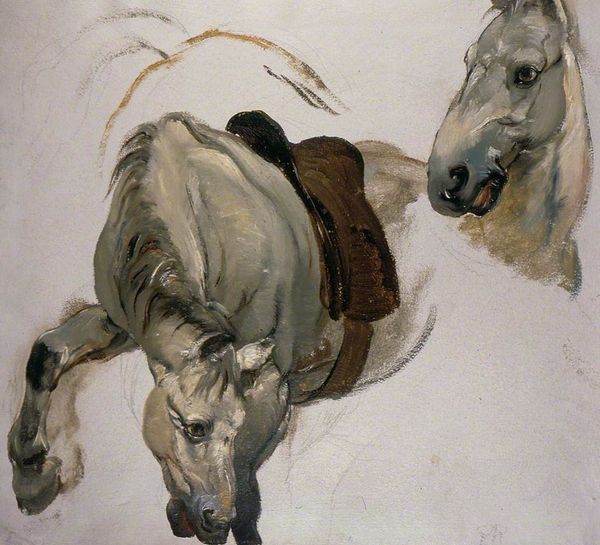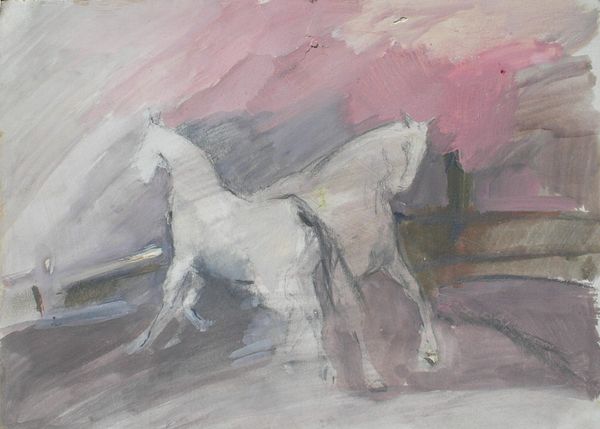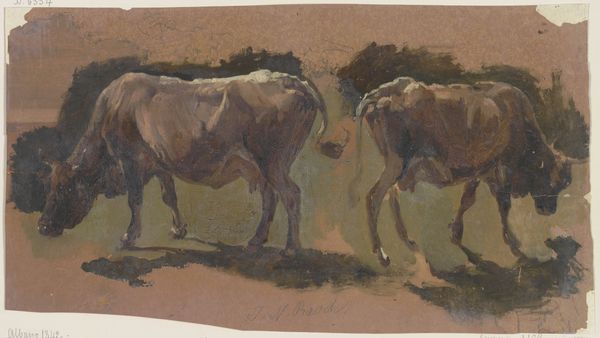
oil-paint, impasto
#
abstract expressionism
#
animal
#
oil-paint
#
landscape
#
figuration
#
oil painting
#
impasto
#
expressionism
#
expressionist
Copyright: Małgorzata Serwatka,Fair Use
Curator: Here we have Małgorzata Serwatka’s "Horses - autumn", an oil painting rendered with visible impasto brushstrokes. Editor: There's something very restless and melancholic about it. The muted color palette feels autumnal, just as the title suggests, and the horses seem almost spectral. Curator: Considering the visual language, the bold expressionistic style, one might draw parallels with the historical legacy of depicting horses, especially in the context of power, freedom, and movement. Think Delacroix, but with a distinctly modern, almost unsettled gaze. What narratives are present regarding domestication, and human-animal power dynamics? Editor: Absolutely. Horses are frequently powerful emblems. What strikes me here is the subdued color and near abstraction. They are less literal steeds of glory, more akin to half-formed memories or ideas, don't you think? Notice the fence--a visual metaphor, surely? Curator: Yes, let's delve deeper. We need to investigate Serwatka's approach to these ideas through an intersectional lens. Where does the concept of "autumn" place us—symbolically representing aging, change, or loss—and how can we analyze these ideas through various frameworks to further our viewers' understanding? What meanings do those associations carry for women or marginalized communities, particularly in the socio-political environment? Editor: Right. They are phantoms more than flesh, rendered in brushstrokes thick with visible feeling. Curator: And this impasto contributes a tactile and visceral experience that begs the question, is there a way to perceive them as sentient and struggling? Serwatka is inviting us to explore the intricate ties between human impact and animal lives. The way she treats this scenery calls to a history of objectification in the grand scheme of societal pressures, and to think deeply about how visual arts can be a lens for analyzing those crucial aspects of gender, race, class, and ability. Editor: It leaves one wondering about our relationship to these powerful animals; one might get the sense that they are somehow held in place, just as they exist, suspended, between a dream and a landscape fading to ochre. Curator: This piece prompts some important conversations regarding our world, and society; Serwatka allows the spectator to pause, to ask poignant questions about justice, dignity, and liberation that every exhibition visitor may hopefully bring into their own personal context. Editor: I agree. It’s less about horses and more about what they stir within us as reflections of broader, sometimes painful, experiences.
Comments
No comments
Be the first to comment and join the conversation on the ultimate creative platform.

